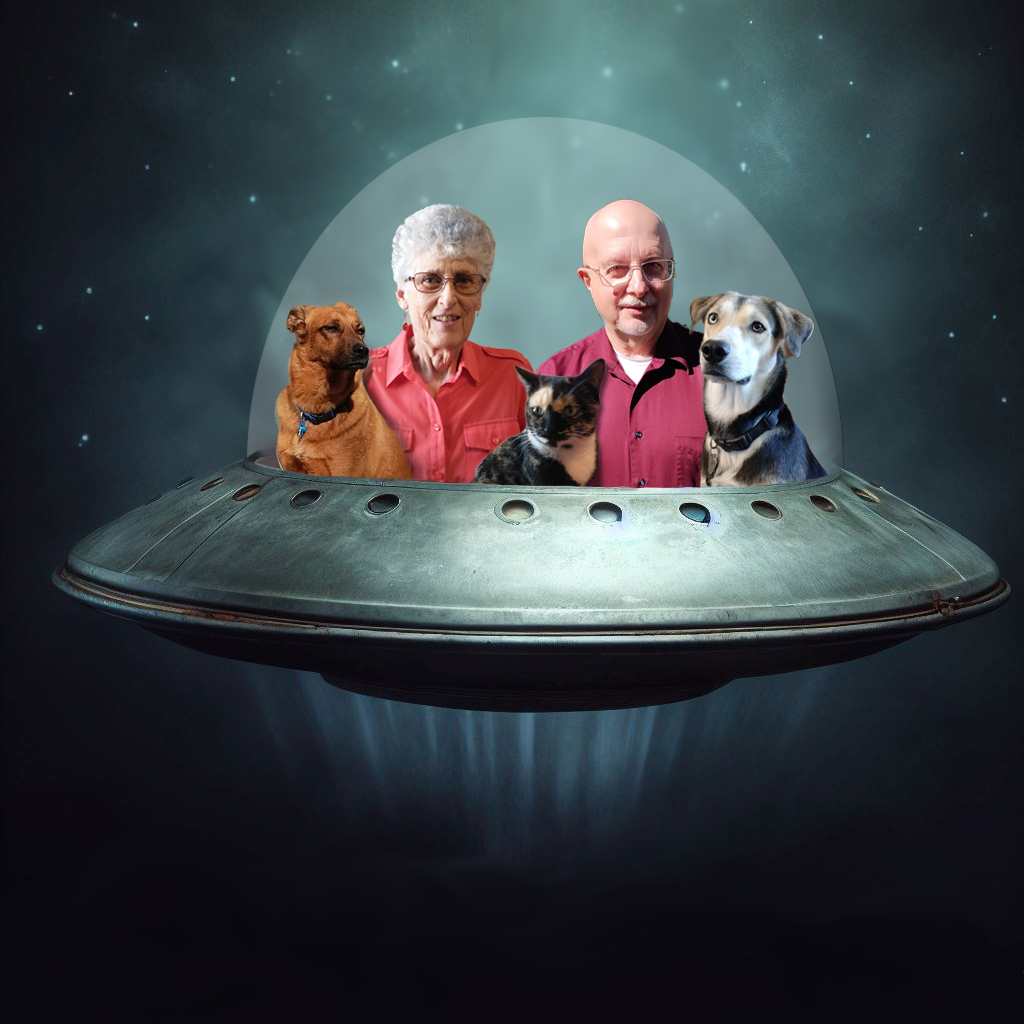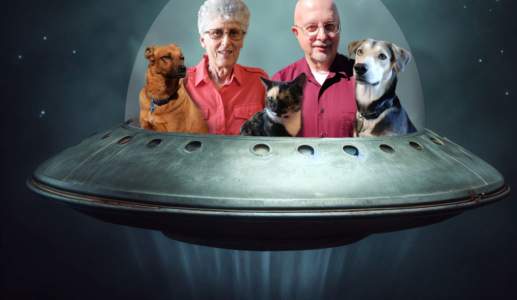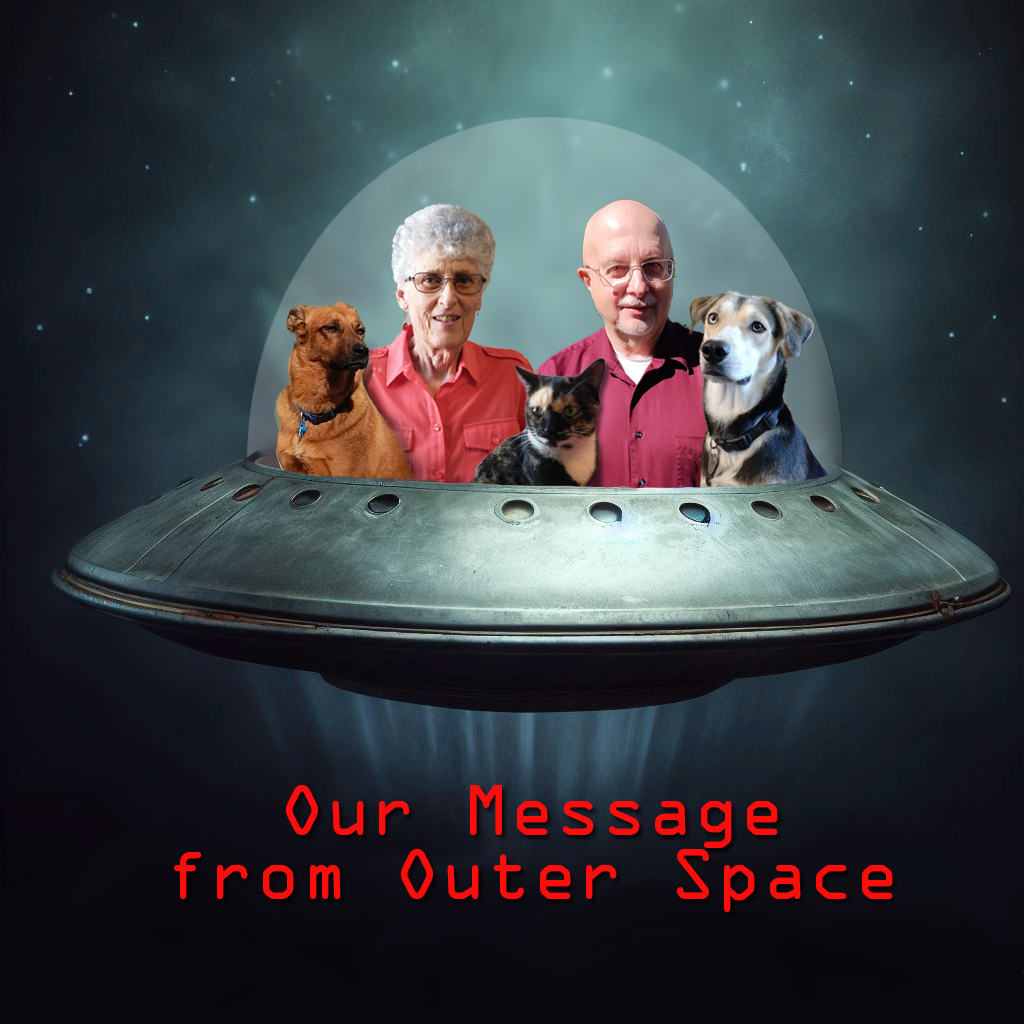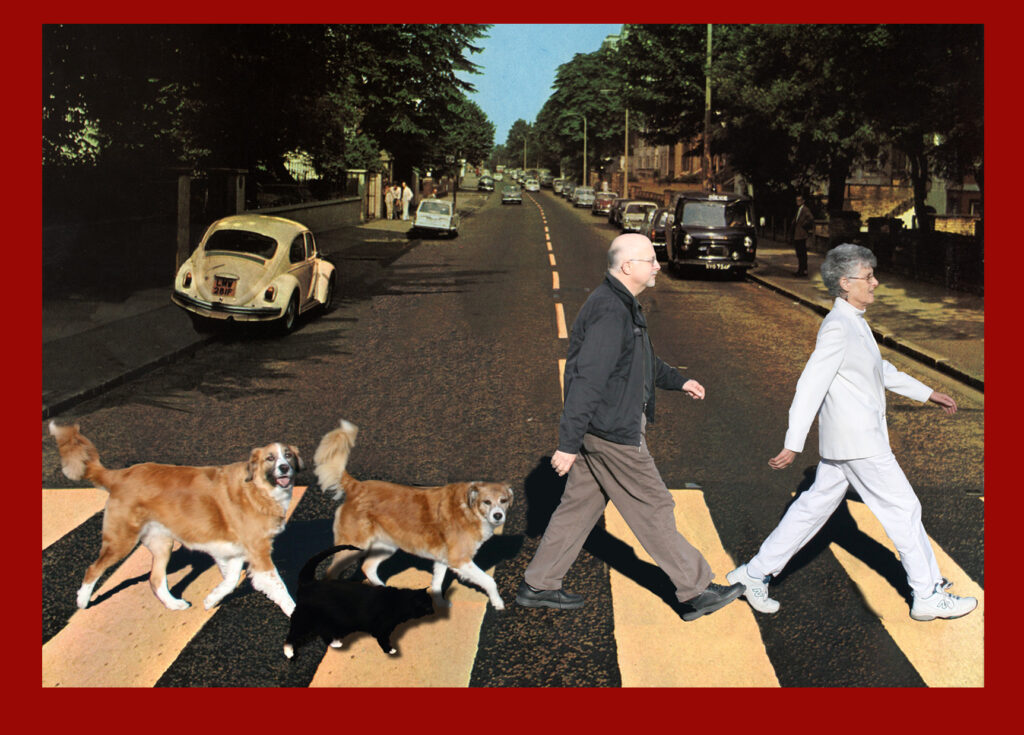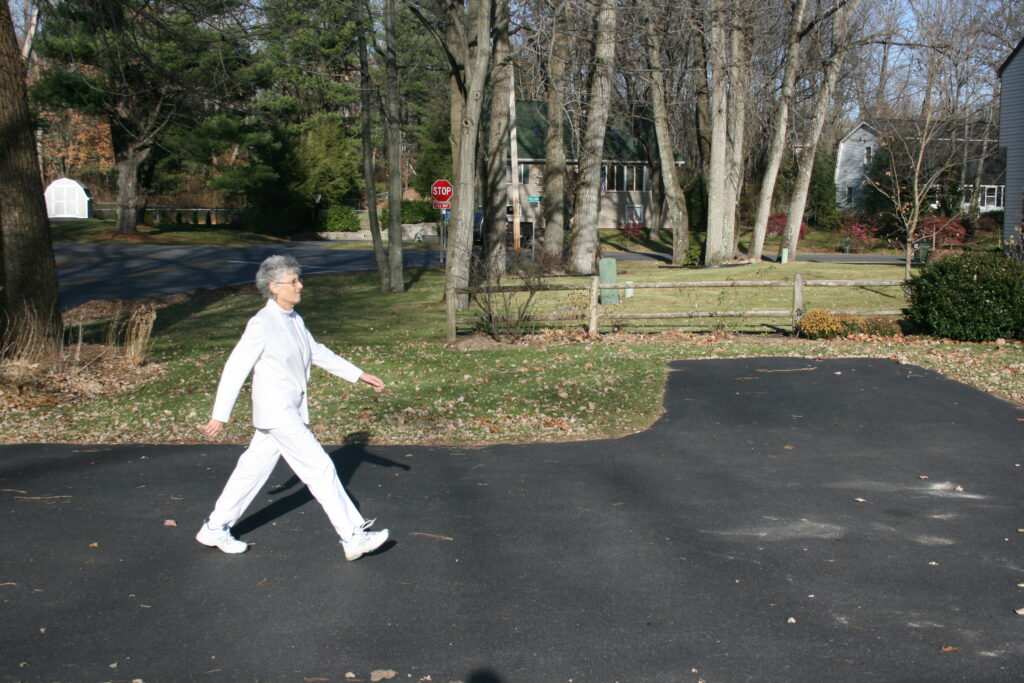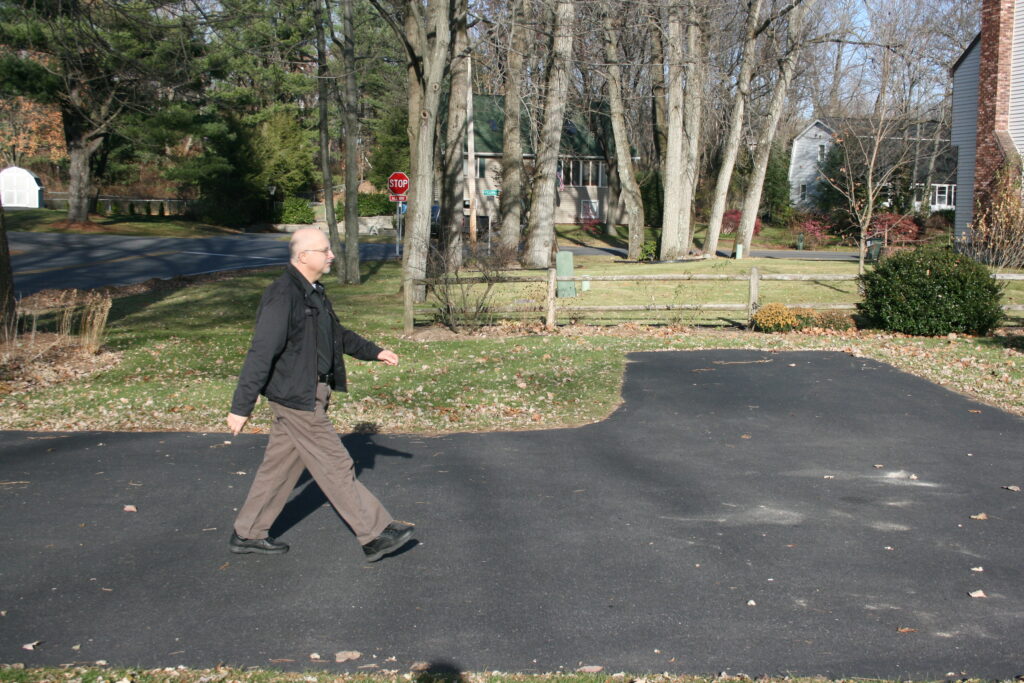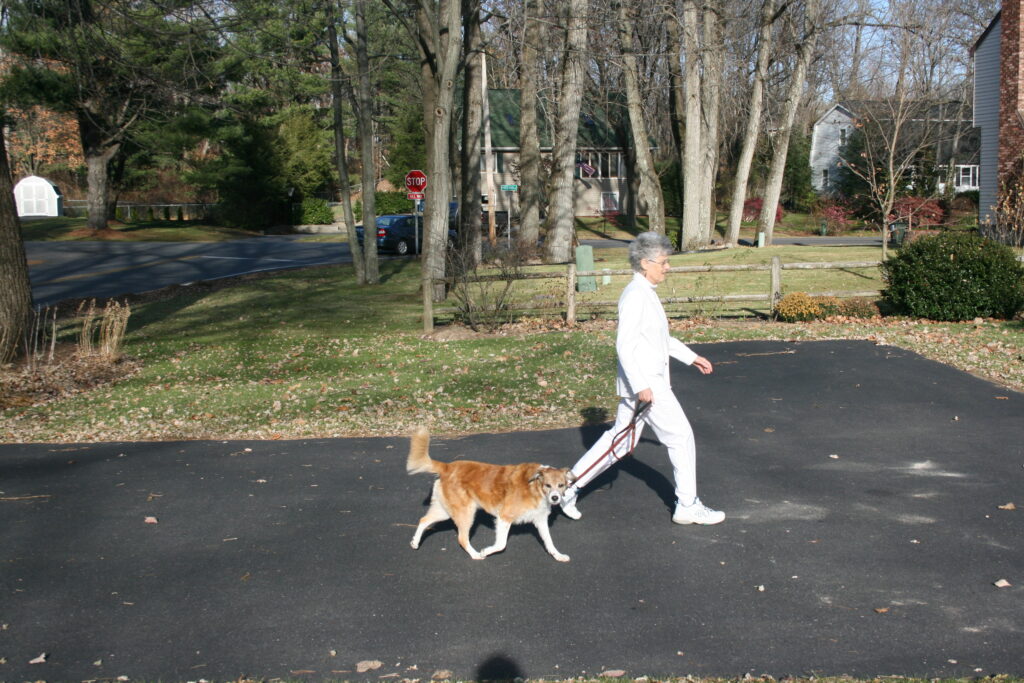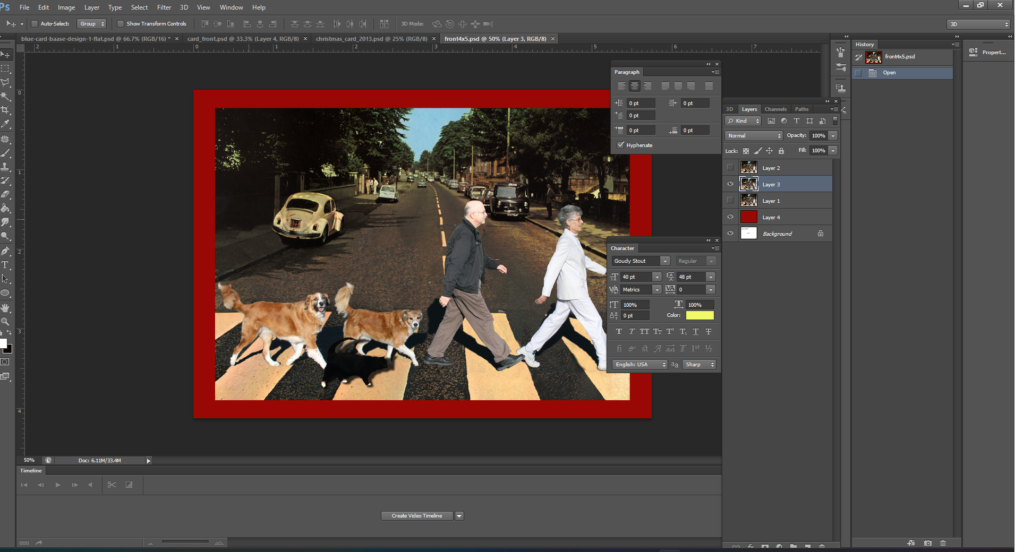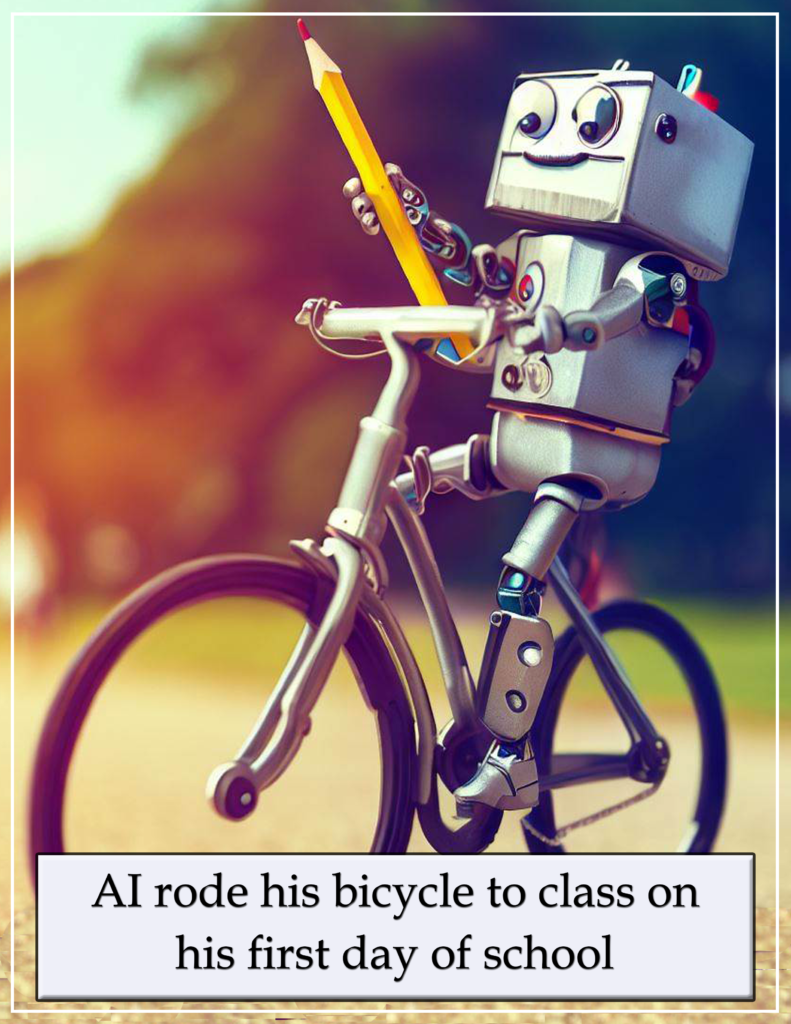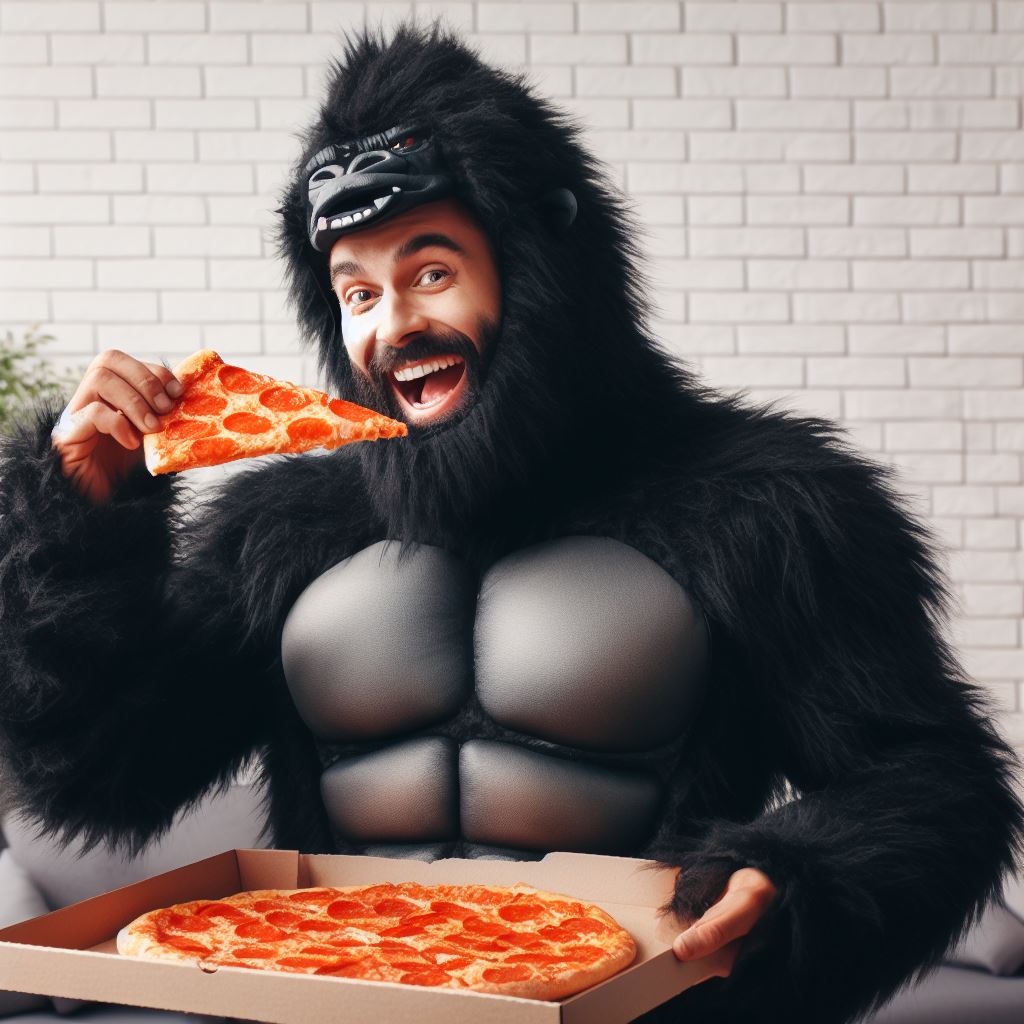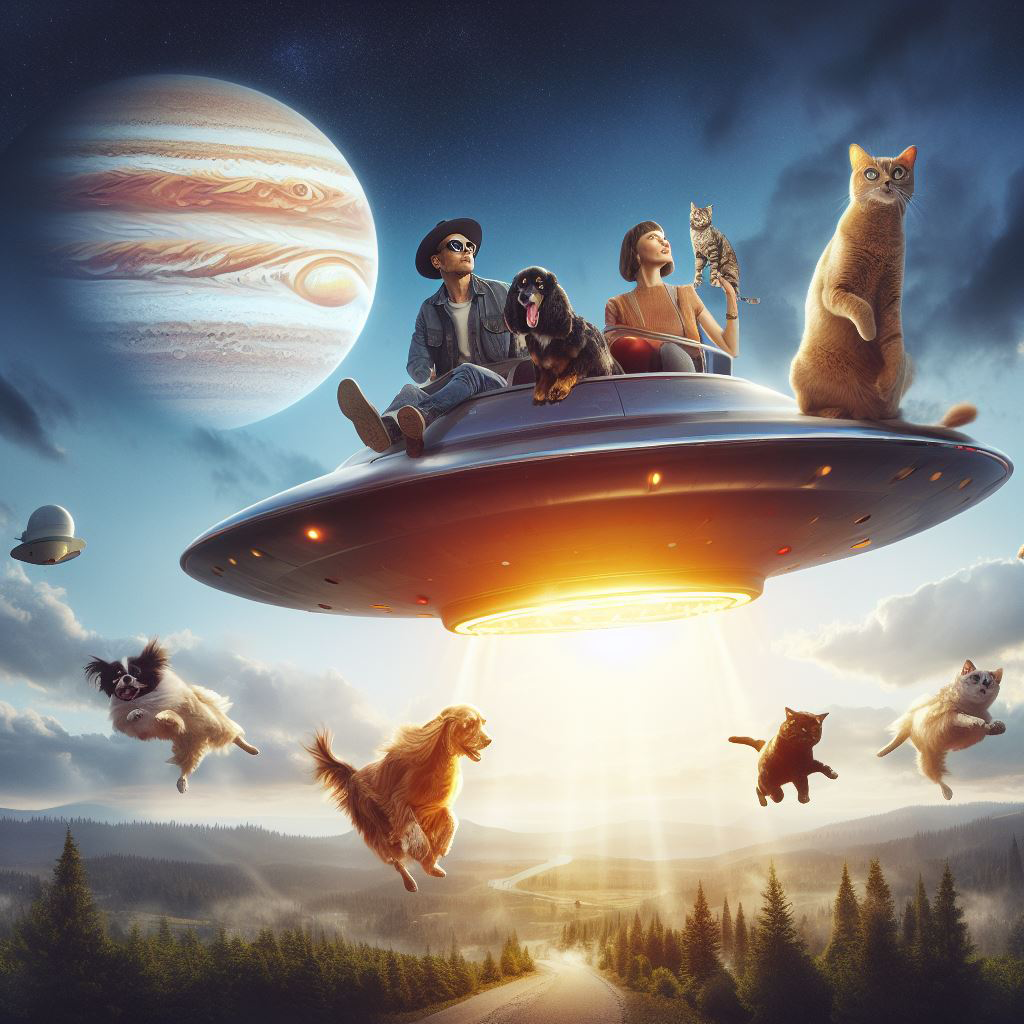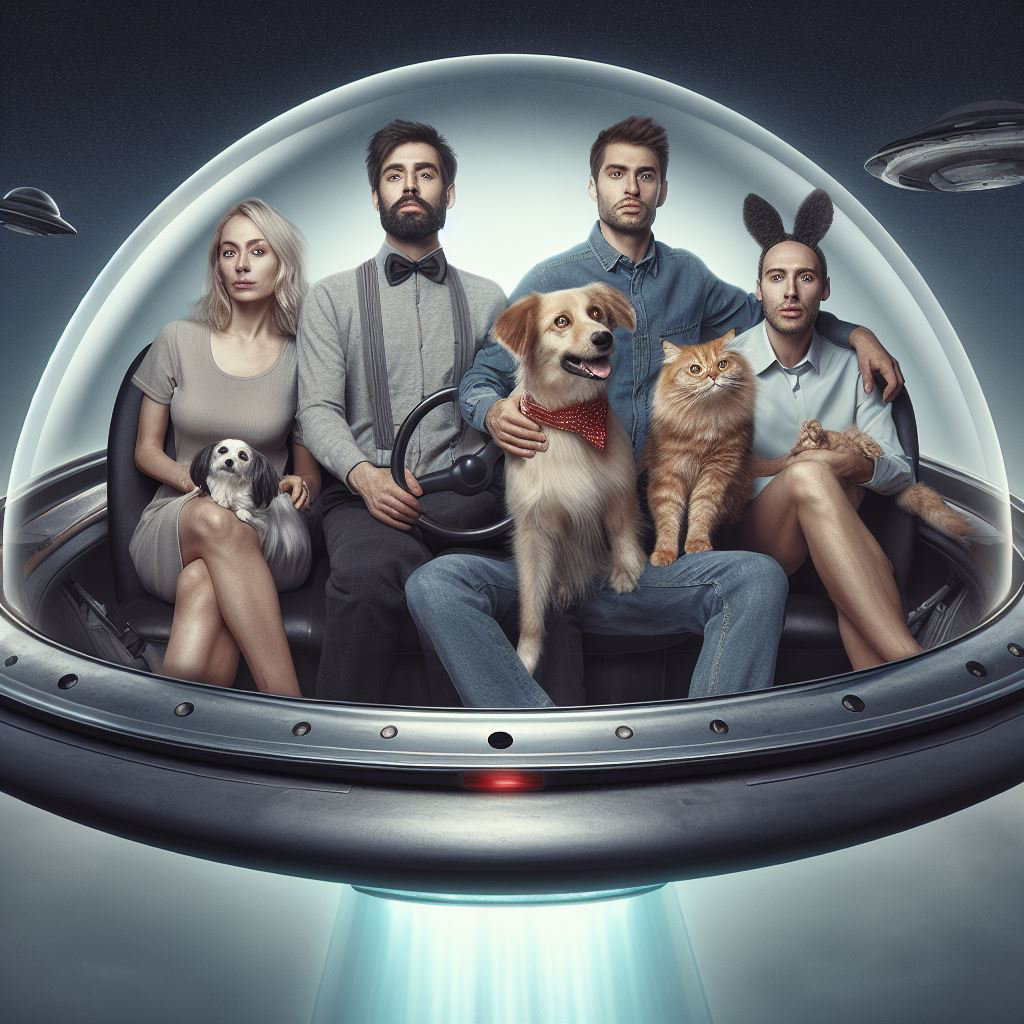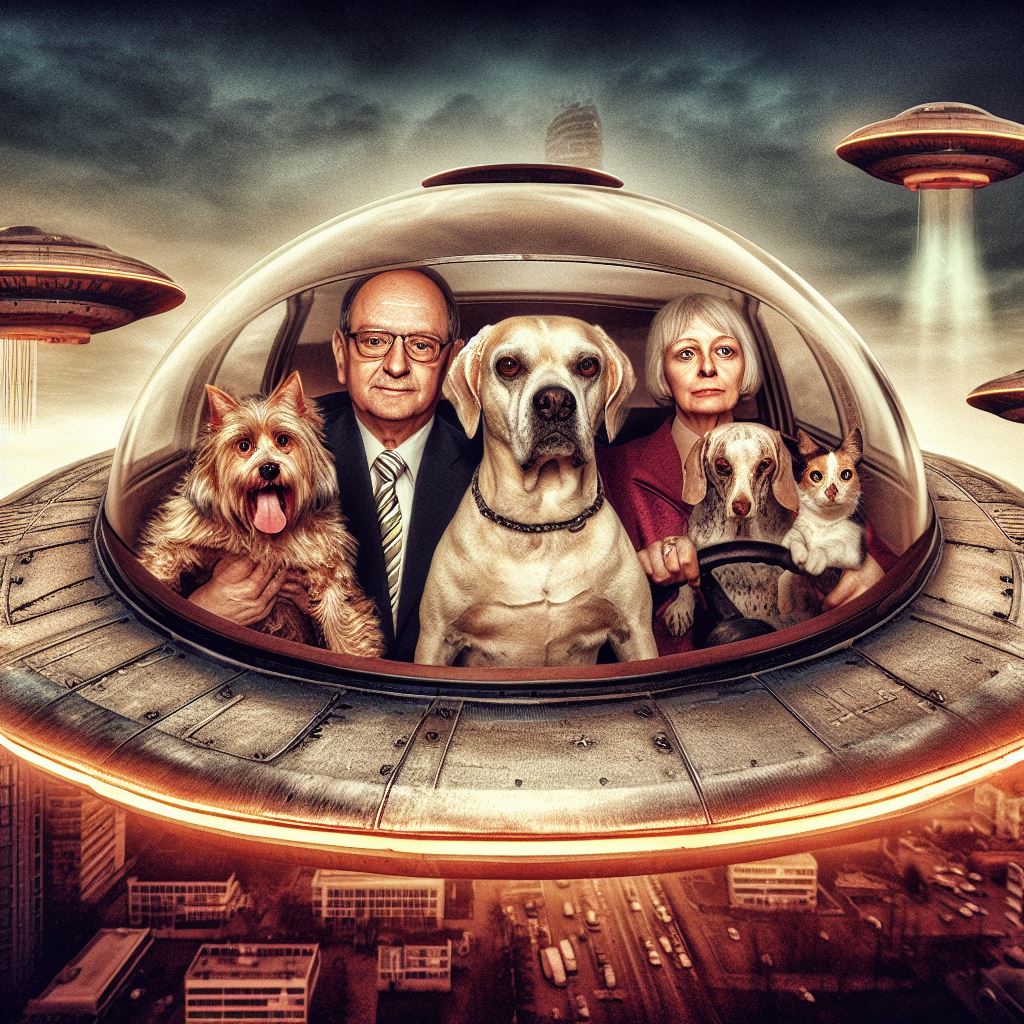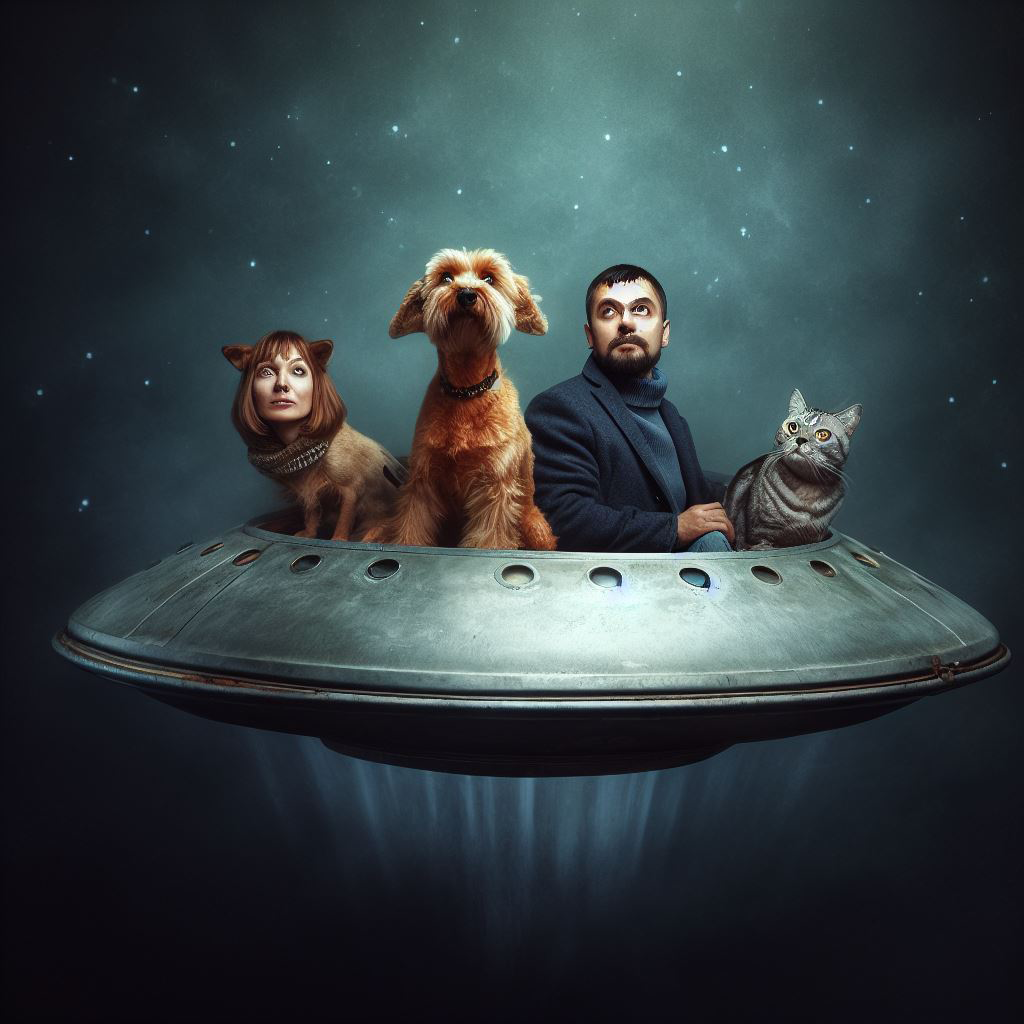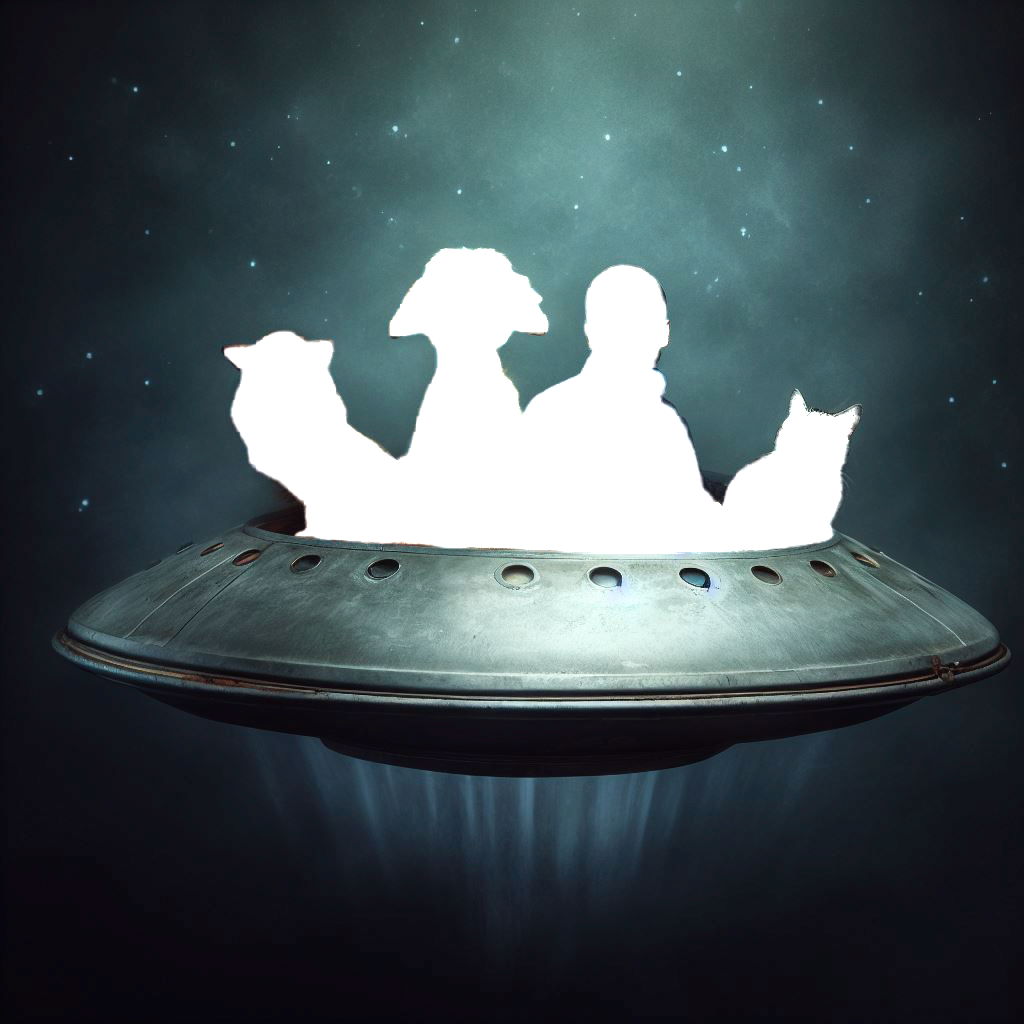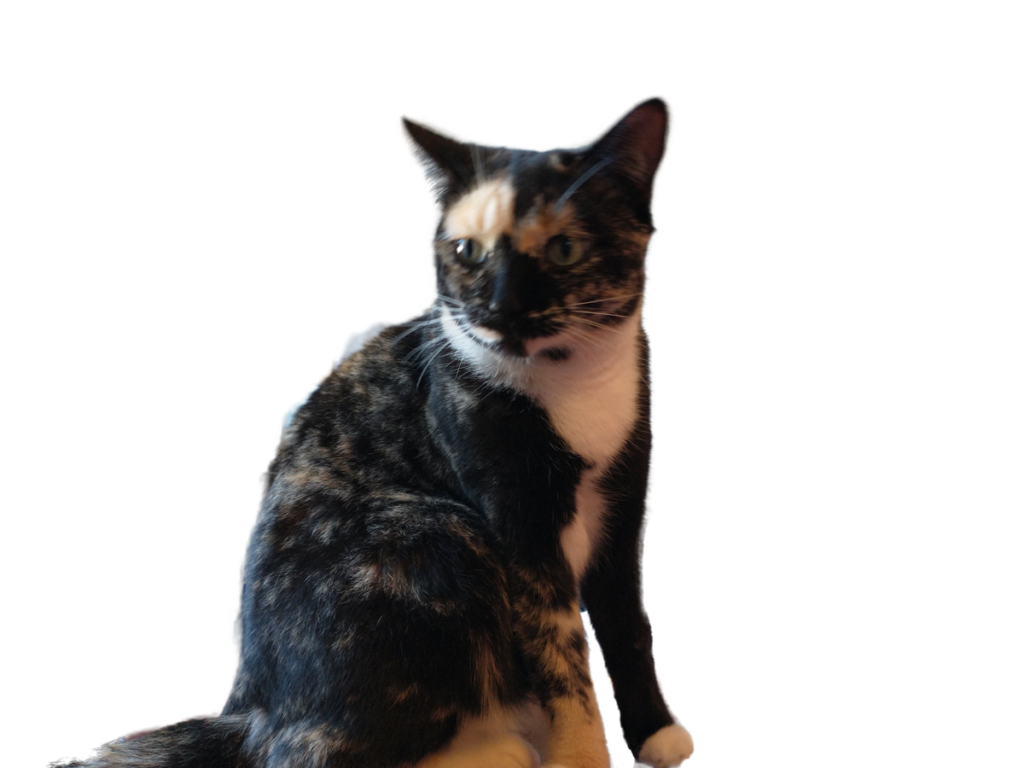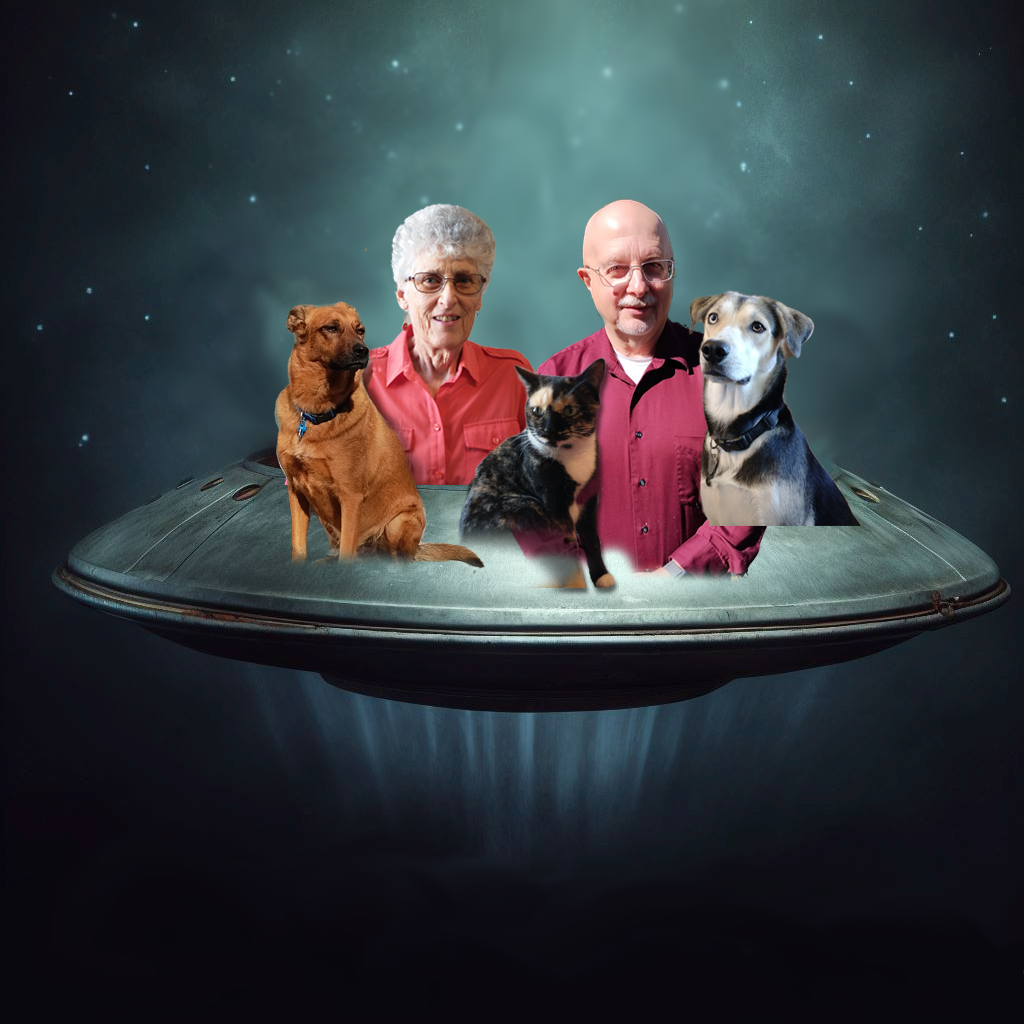Introduction
Since we started our series of specially designed holiday cards, we have been asked many times how we came up with our ideas and made them a reality. The short answer has always been “Photoshop”. That has satisfied most folks as Photoshop remains a mystery, and the Photoshop users immediately understand the complexity of the project.
However, this year we did something a little bit different, although Photoshop was still involved. So, for those of you who have been asking about this year’s card, here is the background and how we did it.
Past Years’ Projects
Abbey Road 2013
Everything starts with an idea, and in the case of 2013 there was a lot of reminiscing about the Beetles Abbey Road album. We decided to go with the flow and use that as our theme.
This was probably the most complicated holiday card that we have done. The first step was to find a suitable background photo of Abbey Road in London. Then the next step was to create photographs of us, that is, me (Roger), Anita, Maggie, Annaleigh, and the cat Moonlight.
After calculating the approximate camera position and angle in the original Abbey Road album art, we created a similar setup in the driveway using a tripod and ladder. No doubt the neighbors were wondering what we were up to.
Then we made a series of photographs using the “Sport” setting on the camera while each of us walked along. We figured, correctly, that we would snap a suitable image sooner or later.
We had to make several passes for each of us in front of the camera to get the photographs that were needed.
Each dog had to walk up the driveway several times. An example of this is illustrated in the photograph on the left.
Of course, we were not able to lead the cat outside because cats are notoriously uncooperative. We had to follow Luna around the house until we finally captured her properly.
All together we took about 200 photographs for the project.
The remaining steps, all one zillion of them, were classic Photoshop. Each subject was removed from the original image and then pasted into the master Abbey Road photo. Shadows where added or tweaked, the crosswalk was re-painted as necessary, and background details were adjusted if needed. All in all, the master Photoshop file had over 40 layers.
When the Photoshopping was all done, the image was flattened, that is the layers were combined down into one layer, and sent to the printer.
You may be interested to note that there is one significant error in the finished picture. I say “significant” because I spot it instantly every time I look at the artwork. Most people claim they do not notice it. Maybe it is no big thing, but maybe they are being polite.
If you identify the error, don’t tell me.
The Thin Man Goes Home 2021
Sometimes the holiday cards are built “from scratch” as opposed to starting with a photograph and then heavily modifying the basic artwork. In 2021, the card was based on the poster for the movie “The Thin Man Goes Home” featuring William Powell and Myrna Loy. You can see the poster and info about the movie on the Internet Movie Database here.
As with the Abbey Road card, we photographed each of us, including Lexi the cat, Leon, and Sasha. Then we assembled the card artwork in a new file and built each element in Photoshop. That means the blue background was one element, the yellow block was another, and each text unit was another element. The original movie poster served as a model and inspiration, but it was not involved in the construction of the card in any way.
New Technology and 2023
Ideas Wanted
Finding a theme for the 2023 holiday cards was very difficult. Looking at the subjects that seemed to have everybody talking, we realized that two things seemed to stand out from the crashing and clatter. Artificial Intelligence was a hot topic, and it seemed like everyone was discussing it. Much of what people were saying was either wrong or nutty because most people didn’t really understand what it was.
The other thing that seemed to be cropping up here and there was the topic of UAPs. Unidentified Aerial Phenomenon took over from the term “UFO” because UFOs have come to be associated with space ships and the grays that pilot them. And if you don’t know what a “gray” is, well, you will just have to Google it.
The light bulb went off, let’s make a holiday card that features us riding in a flying saucer!
There was only one problem. I am terrible at drawing flying saucers.
Don’t Give Me “Artificial Intelligence”, I Want the Real Thing!
This is where AI rides to the rescue. Our card art was going to have to be original because the idea for the theme, us riding in a flying saucer, was impossible to find “in the wild”. And seeing as how I can’t draw it properly, I have nothing to bring into Photoshop. This is where AI plays a vital role.
If you need a photograph of a man eating a pizza while wearing a gorilla costume, AI is happy to provide you wish such a picture. In fact, AI will gladly supply as many men eating pizza while wearing gorilla costumes as you can manage.
But, what I needed was a man, a woman, two dogs, and a cat riding in a flying saucer.
How hard can that be?
What’s with the Levitating Dogs?
If you haven’t tried it yet, go to https://www.bing.com/images/create/ and start an image query. The instructions are simple and you will get the hang of it in no time.
Unfortunately, as you will probably discover, AI isn’t quite as intelligent as we would like it to be.
On the right is a typical return for the request “Photograph of a man, a woman, two dogs and a cat in a flying saucer”. As you can see, there are too many animals, and some of them are sort of swimming in space.
Sometimes the returned images were just plain weird. Animals would have 7 toes, people might have bizarre expressions, or something else would be wrong. One of the strangest pictures can barely be described because it featured people and animals sitting in a cardboard box that was in a flying saucer. And that is only part of what was in the picture.
The image on the right was generated by AI using the same query mentioned above. I can’t explain this one.
By making changes to the query terms, it is possible to have AI come up with totally new images. The changes can be very subtle, such as adjusting the order of words. Modifying “Photograph of a man, a woman, two dogs and a cat in a flying saucer” to “Photograph of one woman, one man, two dogs and a cat in a flying saucer” can result in significantly different returns.
After many attempts with repeated changes and modifications to the query terms, we came up with a suitable base image, which is shown on the right.
For those folks who question the validity of Artificial Intelligence in art, well, I must emphasize that the images you have seen here were not created by AI all by itself. Query terms had to be created by us, changes had to be made by us, and the final product had to be approved by, guess who, us. In this case, Artificial Intelligence is not much more than a sophisticated brush working on fancy canvas.
Now Comes the Tricky Part
The AI-generated base image was opened into Photoshop. The next step was to cut out the subjects in that image. You can see how that looks on the right. This is very straight-forward in Photoshop.
The really difficult part is isolating the people and the animals. Animals are especially hard to work with. On the right we see Lexi after going through a “mask” process where she is removed from the background of a photograph. The difficulty here has to do with Lexi’s fur.
The typical selection tools in Photoshop are not subtle enough to properly outline the furry edges of cat fur or, for that matter, people hair. For that reason, we look again to Artificial Intelligence for assistance.
Using Topaz Mask AI from Topaz Labs, I outlined Lexi and specified which zones to keep and which to remove. The Artificial Intelligence engine in Topaz AI calculated the “fuzziness” of Lexi’s fur and then compared the results repeatedly. After a few moments the AI process came up with the image on the right.
This same masking process was applied to Anita, me, Leon and Sasha.
To be clear, what AI was able to do in less than a minute would have taken me nearly an hour to do with results of lesser quality.
Using Artificial Intelligence for outlining fuzzy edges is obviously a great thing, but it is equally useful for hard edges, especially those edges with curves. Anybody who has used the Selection Tools, such as the Magnetic Lasso, in Photoshop knows how tricky and tedious it can be. Manually outlining a hard curved edge, such as a Porsche 911, a bald head, or a rocky mountain, can be time consuming and annoying.
Meanwhile, back in Photoshop the background of the base image had to be fixed. Removing the original subjects resulted in large white spaces, so the background had to be modified so that those spaces were largely filled in. This is a fairly easy, but tedious, process using several of Photoshop’s tools.
The image on the right illustrates the process about half way through to completion.
We made a copy of the flying saucer’s front panel, as you can see on the right. This copy was saved as a layer in Photoshop. Next you will see why this was so important.
The separated images of the subjects, meaning us, were brought into the Photoshop project and aligned in a suitable manner. Notice how on the right it looks like we are all floating outside of the flying saucer.
Once the layers featuring the subjects were in place and properly positioned, the front panel layer was activated and the position adjusted. Another layer featuring the flying saucer dome was added. Later, text layers were applied, too.
The layers feature of Photoshop are very important in nearly all projects. Imagine that each component of this holiday card (Leon, Lexi, flying saucer, stars, etc.) are all printed on separate playing cards and all of these cards are stacked in a deck. Now imagine that the you can “shuffle” the cards up and down in different layered configurations in the deck. That is how Photoshop layers work.
All in all, the project had over 22 Photoshop layers.
And There You Have It!
After the various finishing touches, such as alignment adjustments and text shadows, the layers were “flattened” into one layer. The finished Photoshop image was exported into TIF format and then sent to the printer.
The result is shown on the right.
Happy Holidays and Happy New Year!
